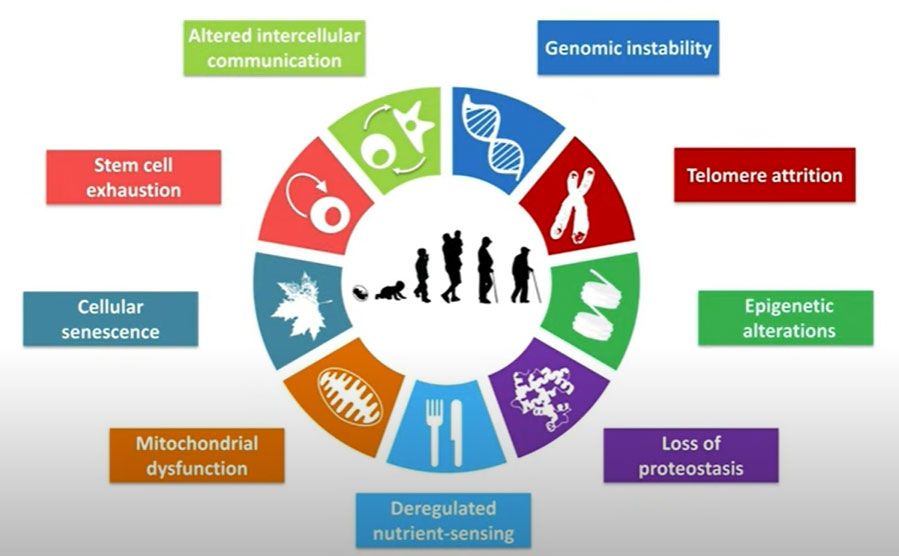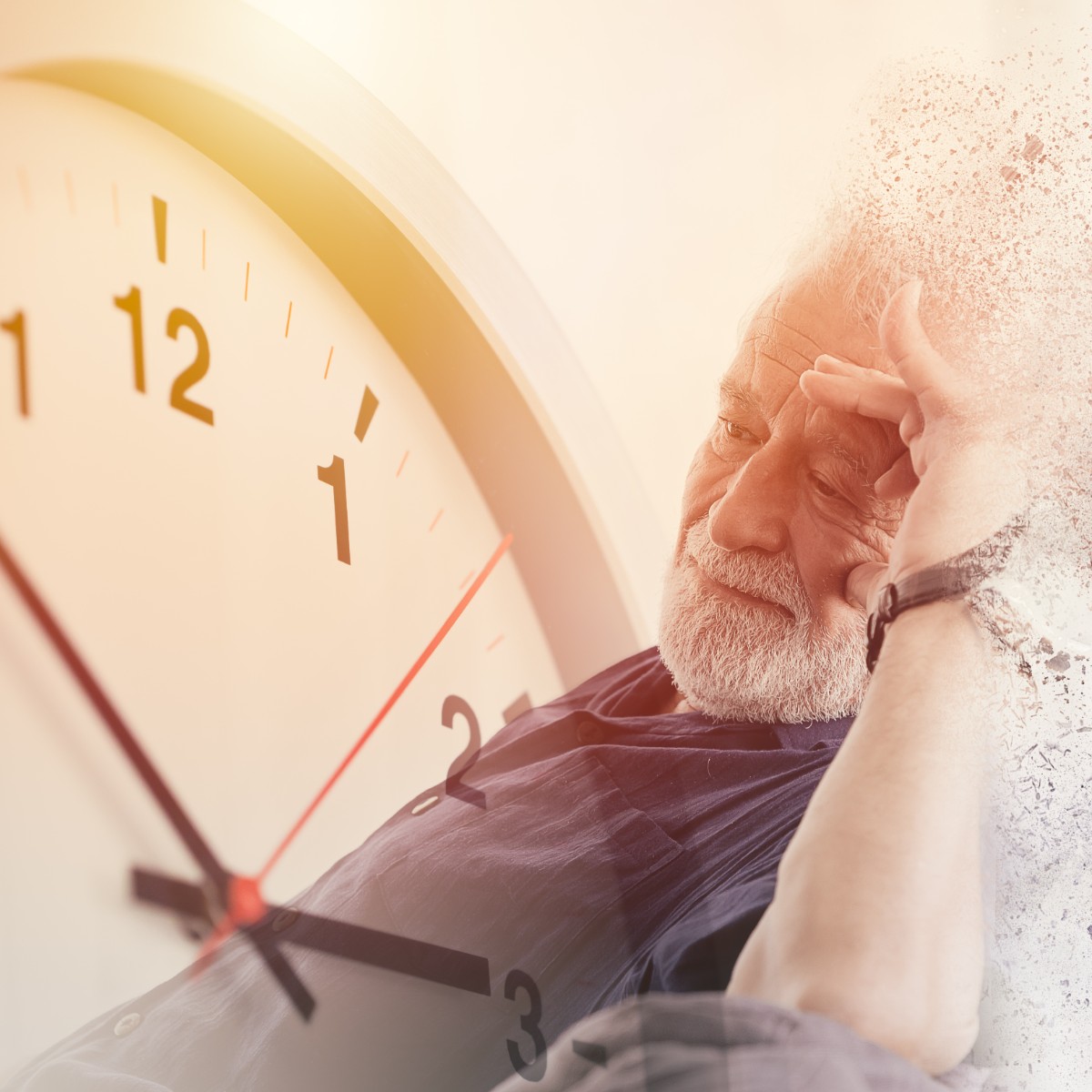
Senescence= biological aging
Why do we age?
Telomeres = end caps on the chromosome which prevent the chromosome from fraying. Replicative senescence is the result of telomere shortening that ultimately triggers a DNA damage response.
Senescent cells are playing a pathological role in age-related diseases. These are zombies like cells which are accumulate in a body and inflame the cells around them. There is a poor intercellular communication, there is a mitochondrial disfunction, there 89 older features of the cells.
All these are the response of aging and not the cause as the recent studies are showing. Animal cloning demonstrate that we are not losing information in the DNA. The lost of information is in the epigenome. Every cell in our body has the same DNA, but different types of cells have different epigenome, the system of proteins like histones and chemical markers like methylation that turn on and off genes. Epigenetics allow different cell types to perform their specific functions - they are what differentiate a brain cell from a skin cell. Our DNA is constantly getting broken, by cosmic rays, UV radiation, free radicals, x-rays and regular cell division etc. When our cells repair that damage, the epigenome is not perfectly reset. And hence over time, noise accumulates in our epigenome. Our cells no longer perform their functions well.The secret to slow aging seams to be taking better care of our epigenomes.
Two model of existence
1. When environment is good, the cells are using their energy to grow and reproduce. In this stage, longevity genes are dormant.2. When the environment is harsh, the cells are using their energy to protect and repair. In this stage, longevity genes are activated. The longevity genes create enzymes which among other things will protect the epigenome.
The longevity genes are responsible for restoring our telomeres and cells. In this way our cells will not forget what to do.
There are three types of longevity genes:
1. Sirtuins(silent information regulator) - control the information into the cell
2. AMPK(activated protein kinase) -senses how much energy is taken in, mostly in a form of sugar
3. mTOR(mammalian target of rapamycin) - control and respond to how much amino-acids are taken in
Ways to activate the longevity genes:
1. Reduce the amount of times eating - periodic fasting
2. Keeping a little bit cool
3. Restrict the amino-acids
6 ways to slow the aging process
1. Avoid DNA damage: ware sun screens, avoid x-rays2. Eat less
3. Eat less proteinsbecause your body have way of detecting how much proteins you are taken in
4. High intensive interval training- get your hart rate up to 85% (feel as you are running from a predator)
5. Beuncomfortable cold
6. Beuncomfortable hot
All these things will trigger your body longevity genes maintaining your epigenome and repair your telomeres, going into repair and protect mode rather than grow and reproduce.
Reversing aging
Reversing aging by reversing aging in your epigenome (resetting your epigenome).Gene therapy: trough four factors applied to an adult cell will reset the whole epigenome back to how that cell was when it was just an embryo = Pluripotent stem cell
Gene therapy will be applied for the cell which creates a sever problems (eye sight). Stem cell do not know to make the difference between kinds of cells. To generalize it for the whole body makes that body just a big tumor without different cells.
Reversing aging remains in the future, but close to us seams to be the possibility to restore part to our body to a functional status.
References:


